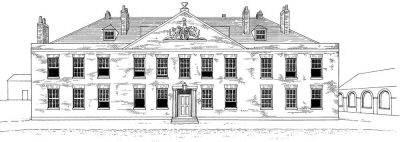Higher Barracks, Exeter
Richard Parker, 2007. https://doi.org/10.5284/1000281. How to cite using this DOI
Data copyright © Exeter Archaeology unless otherwise stated
This work is licensed under the ADS Terms of Use and Access.
Primary contact
Dr
John
Allan
Exeter Archaeology
The Custom House
The Quay
Exeter
EX2 4AN
England
Resource identifiers
- ADS Collection: 752
- DOI:https://doi.org/10.5284/1000281
- How to cite using this DOI
Overview
In his general survey of British barracks James Douet remarks that 'remarkably few detailed studies of individual barracks have been published'. This is a pity, since barracks were large and important complexes serving a wide range of specific functions in addition to that of providing accommodation for the troops. During their military use barrack buildings were frequently altered and adapted in response to the changing needs of their occupants, resulting in multi-phase structures of great complexity. Close study of barrack buildings can reveal much about the relationship between the British Government and its soldiers and civilians, as well as changing attitudes to public order, public health, education and morality.

This report provides a detailed analysis of the buildings of Higher Barracks in Exeter (centred at SX 9213 9346). The Barracks have recently been developed for housing by Barratt Bristol and renamed 'Horseguards'. Prior to this redevelopment the barracks was regarded as one of the most complete survivals of a late 18th-century Cavalry Barracks in England. Many 18th-, 19th- and 20th-century military buildings survived within the compound. Six of the major buildings were individually Listed Grade II and the archaeological interest of the whole group was reflected in the overall Grade II listing of the site. Although many buildings have since been demolished, all the major buildings and several of the minor ones still remain among the modern buildings of the housing estate. This report summarizes the results of building surveys and archaeological watching briefs undertaken by Exeter Archaeology during the redevelopment and conversion of the buildings.





